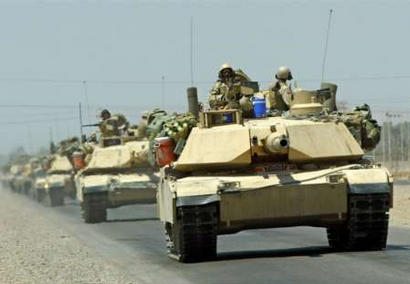In its annual analysis, “The Market for Tanks,” the Forecast International Weapons Group expects the international market will produce more than 5,500 main battle tanks, worth in excess of $24.25 billion, through 2021.
“While increased modernization and retrofit remains transparent to our analysis of new-production tanks, this factor has become a significant force in the international market,” said Dean Lockwood, Forecast International senior military vehicles analyst. “Through ongoing maintenance, RESET (repair of battle damage), and upgrades, the U.S. Army intends to maintain its M1 Abrams tanks in active service through 2050.”
Between 2004 and 2009, U.S. Department of Defense spending on the maintenance, RESET, and upgrade of existing M1 Abrams tanks was, on average, equivalent to 41.24 percent of what the entire international market spent on new-production main battle tanks annually. In 2010, U.S. DoD spending on the maintenance, RESET, and upgrade of existing M1 Abrams tanks experienced a reduction of more than 67.2 percent since the previous year – with a corresponding drop in the equivalent market share, to 10.69 percent. In 2011, U.S. DoD spending on the M1 Abrams fell 42.77 percent from 2010. Since 2004, the M1 Abrams program has lost nearly 82 percent of its market share.
The expense associated with the modernization and retrofit of high-end main battle tanks pales in comparison with the prospect of new tank procurement. Thus, Forecast International expects new production of high-end tanks to remain relatively low, accounting for 22.79 percent of all production, worth 36.05 percent of the market, through 2021.
In terms of sheer numbers, the Type 98 of the People’s Republic of China, Pakistan’s Al-Khalid, and the Russian Federation’s T-90 (including India’s licensed T‑90S) will continue to dominate the market, accounting for 54.73 percent of all new tanks rolling out worldwide, worth 43.79 percent of the market, through 2021.
[ppgallery id=”27″]
In the international market for main battle tanks, the days of U.S. and European domination over new production appear to be long gone. Nevertheless, the established U.S. and European players continue to make their presence felt. The 120mm Rh 120 smoothbore ordnance, the state-of-the-art Leopard 2, and the combat-proven M1 Abrams continue to set the standard for main battle tank design worldwide.
Second only to infantryman in terms of combat effectiveness, the “Mailed Fist” of heavy armor remains the arm of decision on the modern battlefield. Further, as Operation Iraqi Freedom/Operation New Dawn (2003-2011) evolved from a war of movement into a security operation, the main battle tank proved surprisingly adaptable. In the congested streets of Iraqi cities, the Abrams served as a significant force multiplier, fully up to meeting the challenges of an asymmetric warfare environment.










